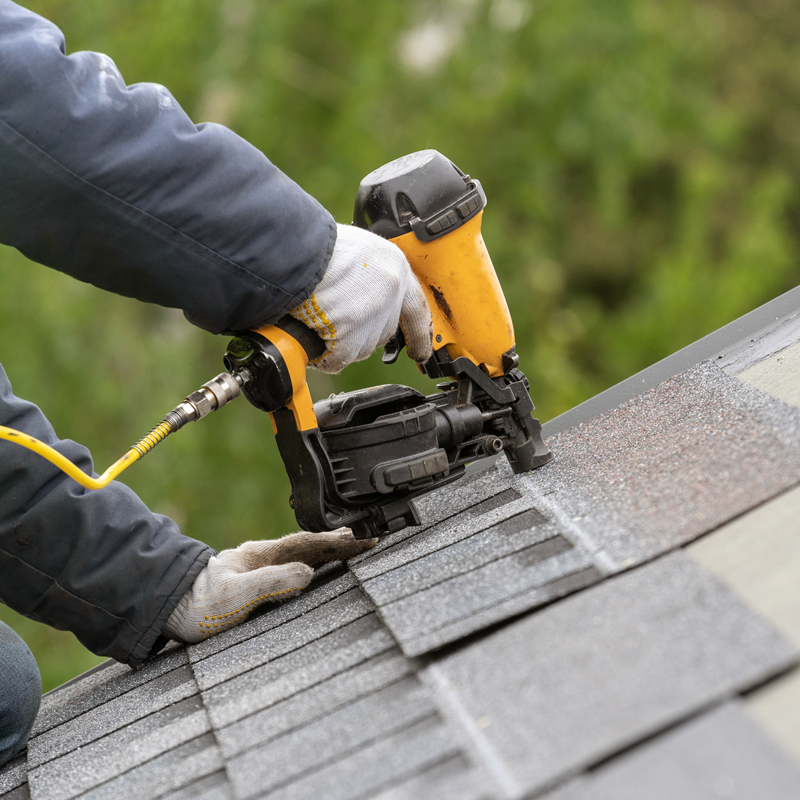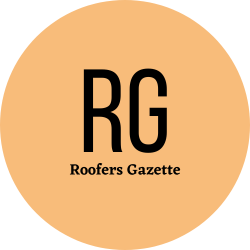All About Roof Installation
by siteadmin

Roofs are essential to a building, protecting against rain, snow, sunlight, and extreme temperatures. They also protect the interior from moisture and fire.
Roofing professionals need to access your roof from all sides, so make sure there’s a 15-foot clearance around the house and clear away toys and patio furniture.
Underlayment
Unlike the shingles that most homeowners see on their roofs, there are many other parts of a roof that make it function well. One of the most important is the underlayment, which acts as an additional layer of protection against weather elements that can damage a roof and the structure of a home.
The most common type of underlayment is a felt paper saturated with asphalt to help with water resistance. This is a relatively inexpensive option but it can tear and wrinkle easily, especially in warmer climates. Also, the volatile compounds that make it water-resistant disperse quickly and can cause problems with other roofing materials.
Another kind of underlayment is a self-adhered membrane that can seal around fastener shanks to create a leak-resistant barrier. This is a good choice for areas like valleys or roof protrusions that can often be difficult to reach and are not covered by shingles.
Depending on where you live, underlayment may be required by local regulations to protect the building and the people inside. The most important thing to remember is that roof underlayment provides a secondary line of defense against harsh weather conditions and helps prolong the life of the roof.
When you inspect your attic, look for a layer of underlayment sandwiched between the roof deck and the shingle. If you don't see it, it is important to contact a roofing contractor and have it installed. There are several different types of underlayment, and it is best to ask your roofer what type is the right fit for your home design and your region's climate. They can also advise you on what roofing material will work best with the underlayment.
Water and Ice Shield
Ice and water shield is a layer of fully-adhered underlayment that creates a waterproof barrier to protect against water infiltration, leaks, and ice damming. It’s an essential element in protecting your home from moisture damage, especially for homes located in northern climates.
It’s installed along the eaves, valleys, and rakes of your roof, as well as around any penetrations such as chimneys or vents, and skylights. It’s placed in areas where a leak or ice dam is more likely to form, and it helps prevent the buildup of ice that could otherwise cause water to back up under the shingles and into your home.
There are several types of ice and water shield available, and your professional roofer will recommend the type best for your needs. For example, Epilay’s Plystik Plus is a tough peel-and-stick underlayment that features Ice Dam Protection, which is designed to prevent damage where ice dams are most likely to form on the edges of your roof. It’s also self-adhered and stays flexible even in extreme weather conditions.
Another option is Grace Ice and Water Shield, which is a premium membrane that’s formulated to provide maximum resistance to cold weather elements. It’s similar to traditional roofing felt paper in appearance, but it performs far better than that basic product. Grace Ice and Water Shield is made with cotton-like fibers that allow it to expand and contract without binding to metal roof panels, allowing it to provide a protective seal for premium roof systems like slate or cedar shake.
Your roof is a major investment, and it’s important to have all the elements working together in harmony. For that reason, if you’re looking for a quality roofing contractor we provide expert repair services as well as the best contractors Port St Lucie FL to assist with all of your projects, no matter how big or small. If you plan to remodel your entire home, turn to us—we have the general contractor Port St. Lucie, FL people know and love.
Flashing
Flashing is a thin metal trim (usually copper, but sometimes zinc, galvanized steel or aluminum) that covers and protects seams around roof penetrations like chimneys, skylights, walls, dormers and roof vents. It can also be seen at the ridge cap of your roof where it creates a watertight seal over the highest point in the house.
Most often, flashing is installed as a zigzag pattern of L-shaped pieces that cover the seams where the roof meets a wall or other perpendicular surface. Typical flashing materials include bare copper, lead-covered copper and aluminum. Generally, copper lasts longer and holds up better to the elements than other options. However, if the price tag of copper is beyond your budget, a roofer can install aluminum flashing that will last as long or longer than other roofing materials.
In general, flashing prevents leaks by directing water into the proper drainage system or over the shingles and underlayment. It's most often seen around "protrusions" into the roof, but it can be found in valleys (the inward crease in a sloping roof where two roof planes meet) and the raked edges of your roof.
Typically, flashing is installed with caulking to hold it in place and ensure a waterproof seal. It is possible for flashing to become damaged due to wear or corrosion, which is why regular inspections and maintenance are so important. Some signs of failing flashing include cupping shingles, swollen areas of shingle underlayment, rust stains, interior leaks and discoloration. If you suspect your roof flashing has failed, contact contractors Port St Lucie FL for a free roof inspection and repair estimate.
Drip Edges
Drip edges are important pieces of metal that run along the eaves and rakes of your roof. They prevent water from entering gaps between the fascia board and roof shingles, which would otherwise cause leaks, wood rot, and mold. Drip edges also help to direct water flow into the gutters, and they come in a variety of styles and materials.
Whether your home is in need of a new roof or you're replacing a damaged section, it's important to make sure that the drip edge is correctly installed to prevent future problems. There are many different types of drip edge available, so it's best to consult with a professional to find the right one for your project.
There are three main kinds of drip edges: type C, type F, and t-style. Each has a specific shape that helps to keep water flowing off the roof and into the gutters. The type C drip edge is an L-shaped piece of metal that fits over the top of the roof sheathing. It is typically made from aluminum, but it can be painted to match the color of the fascia boards. Type F drip edges have a T-shaped flange that extends away from the roof, which can be more effective at directing rainwater into the gutters.
The t-style drip edge is often used on homes with low shingle pitches. This type of drip edge has a vertical leg that sits under the roof sheathing and a horizontal leg that is placed over the gutter. It can be made from aluminum or galvanized steel, and it should be galvanized to protect the surface from rusting. The t-style drip edge is often the most popular choice for homeowners. It's simple to install, and it doesn't require a lot of maintenance.
Shingles
Roof shingles serve as your home’s first line of defense against the elements, protecting materials beneath them from rain, wind and snow. They are overlapped strategically to channel water and debris away from your home, preventing rot or damage to the underlayment and interior building materials. They also add a layer of insulation, helping you maintain a comfortable indoor temperature.
Shingles are available in a wide array of colors, textures and shapes to complement your home’s design aesthetic. The best shingle type for your roof depends on your unique needs and budget. For example, asphalt shingles are an affordable option and have a long lifespan when properly installed by experienced professionals. They provide excellent weather resistance and enhance your home’s curb appeal.
Wooden shingles add beauty and value to your house, particularly in cottage or coastal style homes. Their unique appearance can be enhanced with a variety of finishing touches, including gable and porch ornaments. For a more dramatic look, choose curved shingles, which are pre-bent to create rolling eaves for your Nantucket.
It is essential that shingles are installed according to the manufacturer’s specifications for proper performance and longevity. If they are not installed correctly, they can lift, curl or become dislodged, compromising their ability to resist weather conditions and reduce energy efficiency. In addition, improper installation can void your warranty and lead to leaks or other roofing issues. Using an experienced professional to perform your roof installation and adhering to the manufacturer’s specifications is crucial for long-term performance and the integrity of your home. Contact contractors Port St Lucie FL today to learn more about our shingle roof installation services. We proudly offer a free roof assessment to help you determine the best shingle type for your home.
Roofs are essential to a building, protecting against rain, snow, sunlight, and extreme temperatures. They also protect the interior from moisture and fire. Roofing professionals need to access your roof from all sides, so make sure there’s a 15-foot clearance around the house and clear away toys and patio furniture. Underlayment Unlike the shingles that…
Recent Posts
- Roofing Company Savannah Sheds Light on the Lifespan of Roofs: How Long Should a Roof Last?
- Choosing the Best Gutters for Your Jacksonville FL Home
- Choosing the Best Gutters for Your Chicago Home
- Exploring the Drawbacks of Duct Cleaning: Insights from Air Vent Cleaning Charlotte
- Sons of Monaco Painting Unveils the Ultimate Solution: Roll vs. Spray for Exterior Paint
